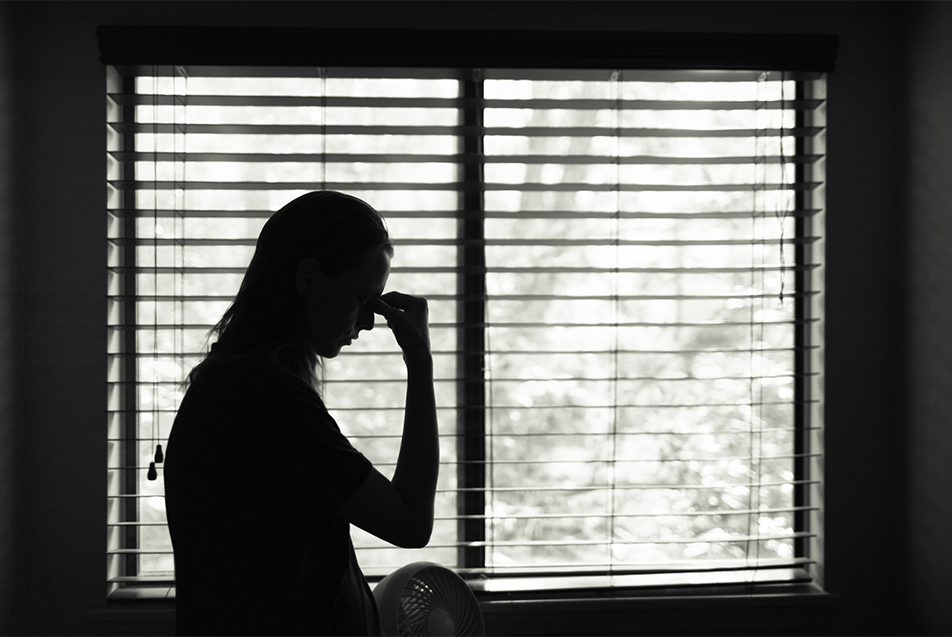
This post was written by Courtney L. Washington, PsyD, CSYAC, HSPP, clinical training director, Park Center, Parkview Behavioral Health Institute.
It’s an all too familiar tale when happily ever after turns into a horror story. This narrative has been repeated consistently in movies, television shows and even local news. So, what defines domestic violence? What factors contribute to people feeling trapped in these situations? How can people get help?
Identifying the issue
The Center for Disease Control (CDC) defines domestic violence, or intimate partner violence, as abusive and aggressive behaviors between two people in a close relationship, including current or past romantic partners. These behaviors vary in severity and frequency. There are four different types of intimate partner violence and include:
- Physical violence: When a person hurts or tries to hurt a partner through physical force.
- Sexual violence: When someone forces or attempts to force a partner into a sex act, sexual touching or a non-physical sexual event (sexting) when the partner does not or cannot consent.
- Psychological aggression: The use of verbal and non-verbal communication with the intent to harm another person mentally or emotionally and/or exerting control over them.
- Stalking: A pattern of repeated unwanted attention and contact by a partner that causes fear or concern for one’s safety or the safety of someone close to the victim.
Another type of domestic abuse is financial abuse, in which a partner limits access to financial resources to maintain power and control over them.
Prevalence
According to the National Coalition Against Domestic Violence (NCADV), 42.5% of women and 27.9% of men in Indiana experience intimate partner violence in their lifetime. Furthermore, over half of domestic violence homicides in Indiana occur with a gun. To better understand the pervasiveness of this issue, let’s also take a look at the national statistics:
- More than 10 million people get physically abused annually, equating to 20 people per minute
- More than 20,000 phone calls placed daily are to domestic hotlines
- Intimate partner violence accounts for 15% of all violent crimes
- Intimate partners most commonly abuse women between the ages of 18-24
- 1 in 4 women and 1 in 7 men have been victims of severe physical violence
- 19% of domestic violence involves a weapon
- The presence of a gun in domestic violence situations increases the risk of homicide by 500%
The risk factors for intimate partner violence can include:
- Lower levels of education
- A history of exposure to child maltreatment
- Witnessing family violence
- Antisocial personal disorder
- Harmful use of alcohol
- Harmful masculine behaviors
- Community norms that ascribe higher status to men
- Low levels of women’s access to paid employment
- Low level of gender equality
The psychological impacts of intimate partner violence can include:
- Depression
- Anxiety
- Post-Traumatic Stress Disorder (PTSD)
- Suicide
- Low-sense of self
- Loss of sleep
- Self-harm
- Substance use
- Negative impacts on child development
Contributing factors
Engaging in abusive behaviors toward your spouse or loved one is a choice and learned behavior. Often these patterns of violence are perpetrated and passed down from generation to generation. With that said, abusive behaviors rarely occur based on a single factor. Instead, there are commonalities in beliefs and attitudes for many abusers, which can include the following:
- A sense of entitlement
- The idea that they should have power and control over their partner
- Think they can get away with it (a lack of consequences for their actions)
- Previous experiences of being abusive get them what they want
- Beliefs that their lives and needs take priority over others
Furthermore, social forces and cultural beliefs/attitudes regarding gender influence abusive relationships. Beliefs such as heteronormative gender roles suggest a limited framework of “appropriate masculine behaviors.” This perspective values men for their aggression, sexual prowess and dominance, yet values women for their submissiveness. These ideas about gender roles get communicated in everything we do and permeate the images portrayed throughout the media. This belief structure also displays values about who should be “running” the household and how heterosexual relationships should be structured. It is also worth noting that this is not merely a heterosexual issue; intimate partner violence occurs within relationships in the LGBTQ+ community too.
Another social issue that is impactful in domestic violence is the perception of impunity, in that there are minimal consequences for these individuals. Steep consequences often require testimony from the survivor and entail them standing up to their abuser. A feat that often seems impossible.
Seeking help
People involved in domestic violence situations are often unable to escape their relationship without assistance. More often than not, the abuser uses their control over their partner to maintain their compliance and the relationship. This control leads to social isolation and a lack of financial resources, which impedes survivors from leaving the abusive situation. Moreover, preparing to leave the abusive situation, or the time soon after, can be the most dangerous. More homicides occur during this window than at any other time. Leaving an abusive relationship is much like fleeing from captivity, in which people escape with only the clothes on their back and involves retreating into hiding for an extended period. Unfortunately, organizations that assist survivors are often underfunded. According to NCAVD, in 2014, Indiana domestic violence programs serviced 1807 survivors on a single day while 182 requests for service were unmet. Additionally, local hotlines received roughly 13 calls per minute, totaling 19,159.
The social stigma associated with seeking assistance
Survivors often feel as if their situation is a by-product of their making. Due to extensive psychological abuse, many survivors begin to believe that they deserve what has happened to them. We often hear, “If I wouldn’t have done X or upset them, then I wouldn’t have been abused.” Finally, the idea of victim-blaming impacts survivor’s willingness to come forward. Victim blaming is the idea that the victim rather than the perpetrator bears the responsibility for the assault. This experience of blame and shame fuels the belief that women are responsible for the violence perpetrated against them.
If you or someone you know is struggling with an abusive relationship, please reach out for assistance. It takes immense strength and courage but can be the first step in changing your life. Everyone in this world deserves to feel safe and loved.



